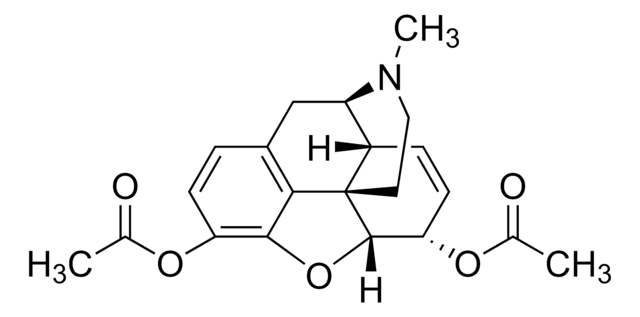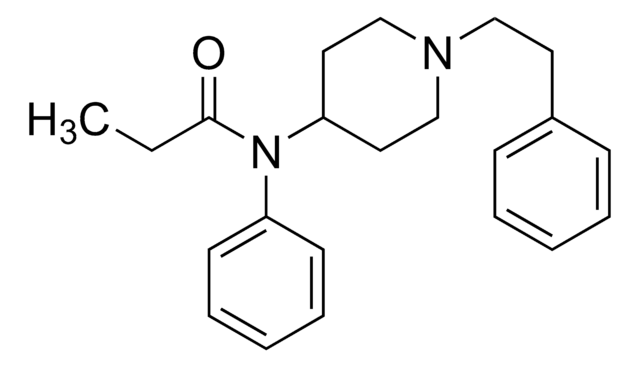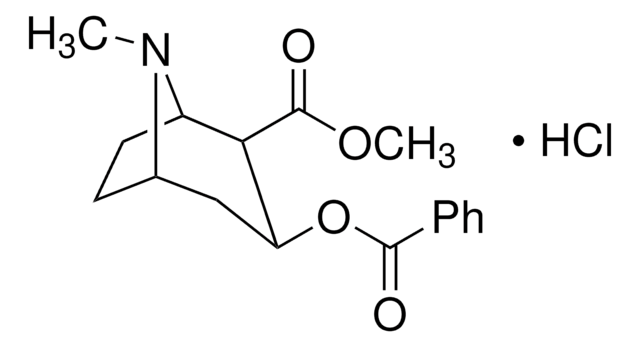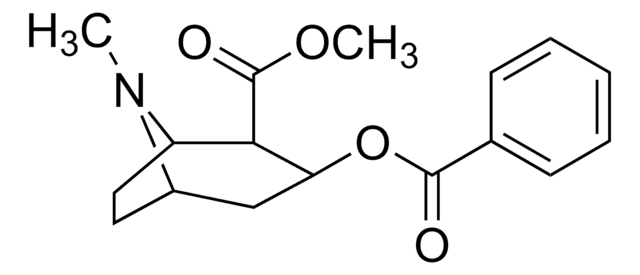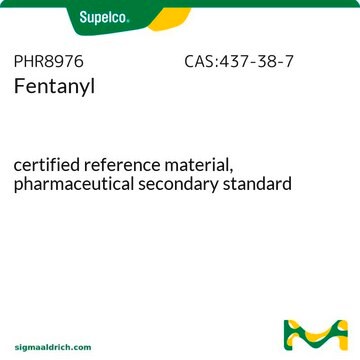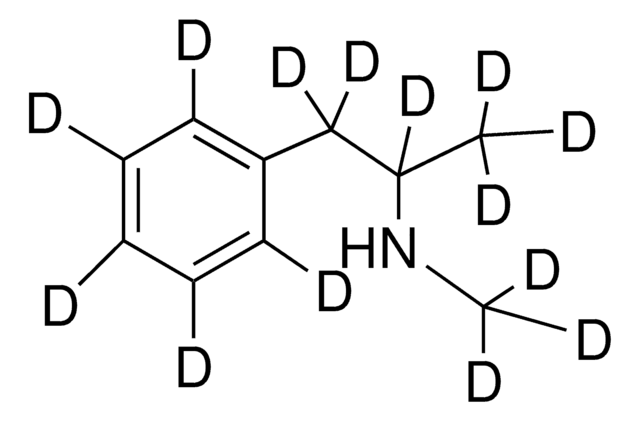H159
Heroin
analytical standard, ≥98% (HPLC)
Synonym(s):
Diacetylmorphine
About This Item
Recommended Products
grade
analytical standard
Quality Level
Assay
≥98% (HPLC)
form
powder
drug control
USDEA Schedule I; regulated under CDSA - not available from Sigma-Aldrich Canada; estupefaciente (Spain); Decreto Lei 15/93: Tabela IA (Portugal)
storage condition
desiccated
technique(s)
HPLC: suitable
gas chromatography (GC): suitable
color
white to beige
solubility
H2O: <0.2 mg/mL
DMSO: 5 mg/mL, clear
ethanol: 6 mg/mL
0.1 M HCl: <6.67 mg/mL
application(s)
forensics and toxicology
pharmaceutical (small molecule)
veterinary
format
neat
SMILES string
CN1CC[C@]23[C@H]4Oc5c(OC(C)=O)ccc(C[C@@H]1[C@@H]2C=C[C@@H]4OC(C)=O)c35
InChI
1S/C21H23NO5/c1-11(23)25-16-6-4-13-10-15-14-5-7-17(26-12(2)24)20-21(14,8-9-22(15)3)18(13)19(16)27-20/h4-7,14-15,17,20H,8-10H2,1-3H3/t14-,15+,17-,20-,21-/m0/s1
InChI key
GVGLGOZIDCSQPN-PVHGPHFFSA-N
General description
Application
Signal Word
Danger
Hazard Statements
Precautionary Statements
Hazard Classifications
Acute Tox. 2 Dermal - Acute Tox. 2 Inhalation - Acute Tox. 2 Oral
Storage Class Code
6.1A - Combustible, acute toxic Cat. 1 and 2 / very toxic hazardous materials
WGK
WGK 3
Flash Point(F)
Not applicable
Flash Point(C)
Not applicable
Personal Protective Equipment
Choose from one of the most recent versions:
Already Own This Product?
Find documentation for the products that you have recently purchased in the Document Library.
Customers Also Viewed
Protocols
Separation of Heroin, analytical standard, ≥98% (HPLC); Cocaine hydrochloride, analytical standard; D-Amphetamine hemisulfate salt solution, 1.0 mg/mL in methanol, analytical standard, for drug analysis; (±)-3,4-Methylenedioxymethamphetamine hydrochloride solution, analytical standard, for drug analysis, 1.0 mg/mL in methanol
Our team of scientists has experience in all areas of research including Life Science, Material Science, Chemical Synthesis, Chromatography, Analytical and many others.
Contact Technical Service